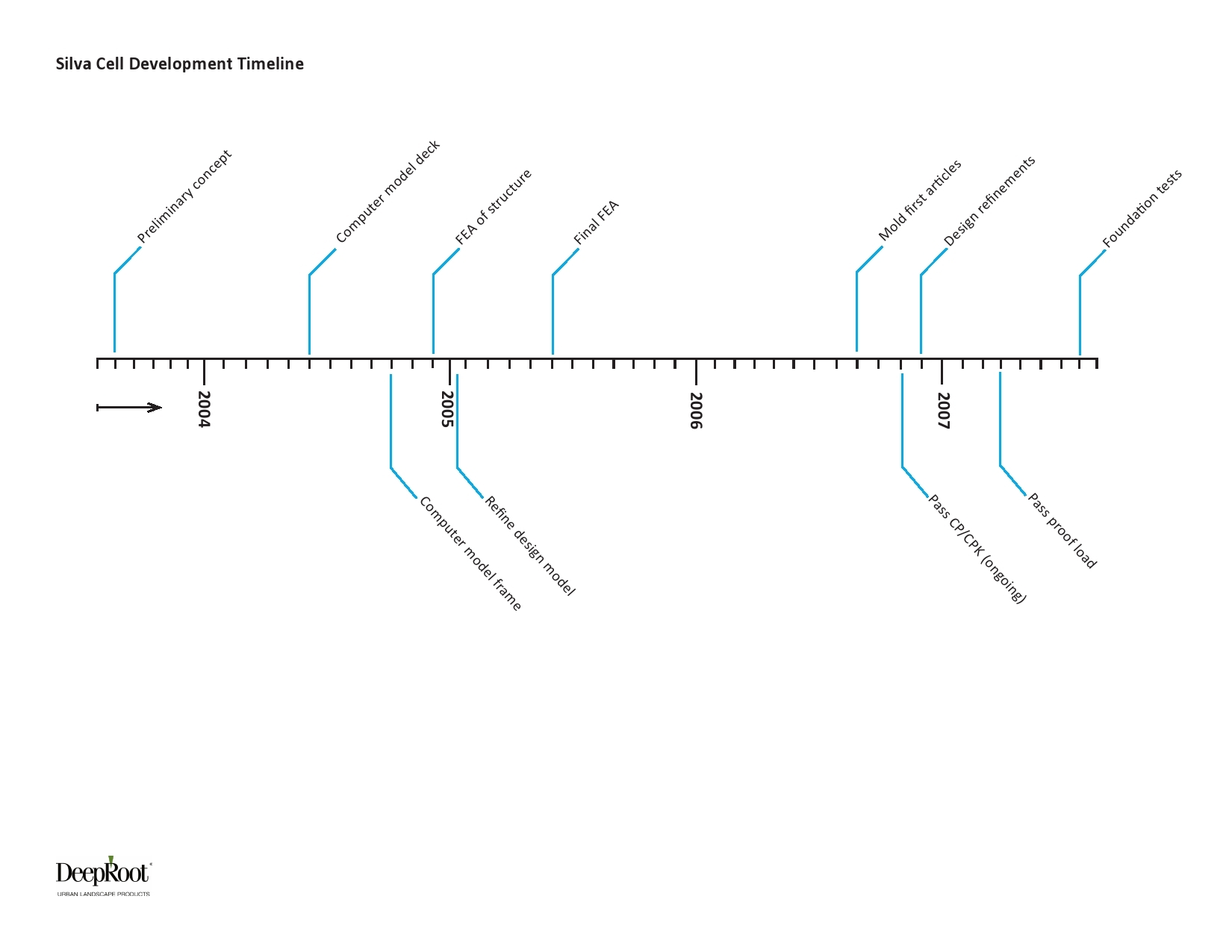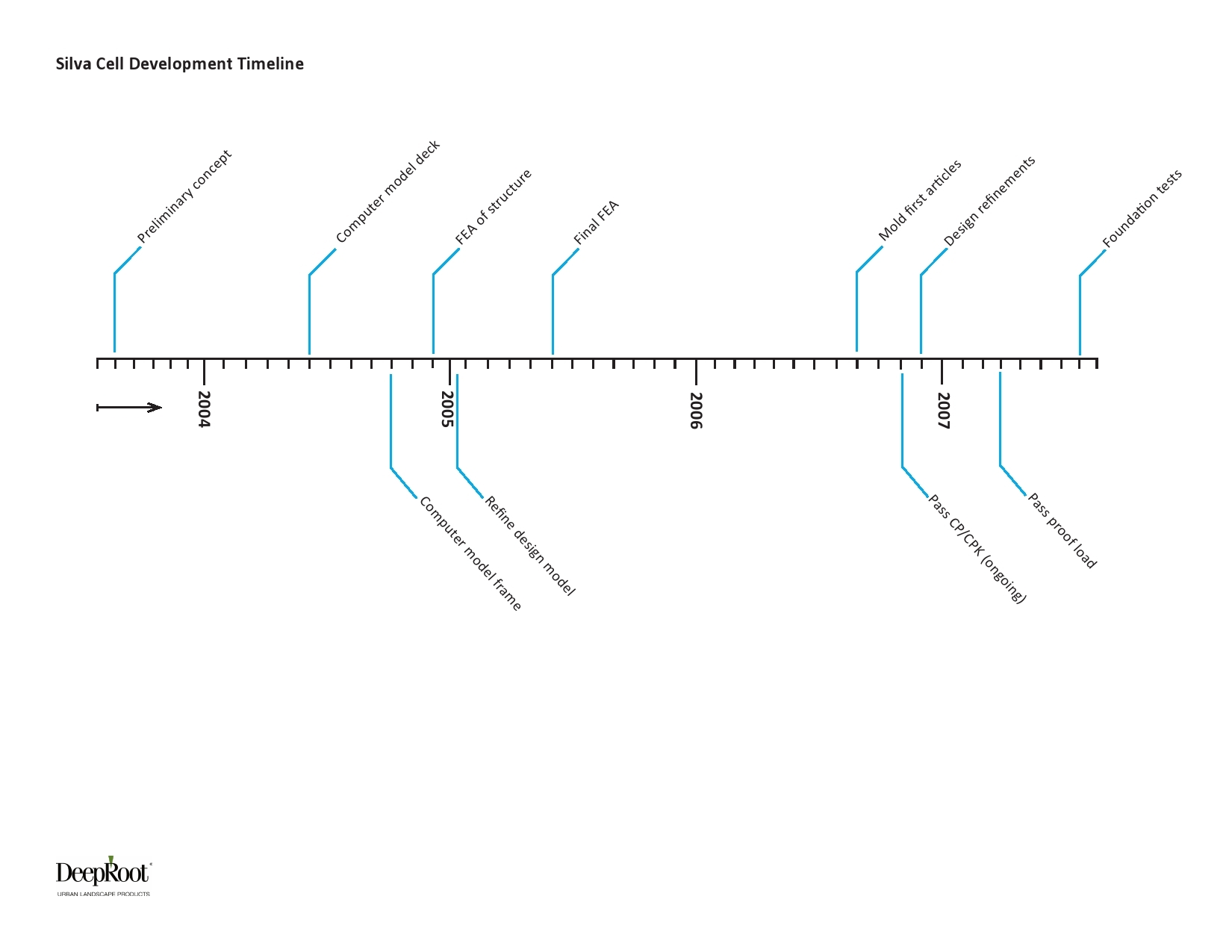
From an initial concept the Silva Cell was developed using a dual program of Finite Element Analysis (FEA) computer modeling and physical load testing. Using this approach, the FEA was used to predict the overall strength and response to loading and the physical load testing was used to prove the strength and response. Throughout the entire process, the final end?use was kept at the forefront of the design: create a system that can handle H?20 loadings while also facilitating the growth of healthy trees in anticipated applications such as parking lots, sidewalk, plazas and others.
Initially, FEA was completed using MSC.MARC non-linear solver for the analysis of the structural integrity of the plastic components. In addition, long term creep analysis was completed using the same tool. Upon completion of this analysis, molds were completed and shipped to TRI Environmental in Austin, Texas for initial physical proof load testing1. These tests, utilizing an Instron model 5589 Tensile/Compression testing machine, were done in several configurations and methodologies as follows:
• Plate to plate loading (meaning loading plate directly on the top deck of the Silva Cell)
• Simulated stacking of frames
• 100‐hour creep with simulated stacked frames
• Differing foundation materials
• Differing geosynthetics materials
• Simulated field conditions with frame and deck filled with soil and a finished surface of geotextile and aggregate with 60mm and 80mm pavers as per our standard details
All tests results were closely corroborated with FEA analysis and expectations and the tests provided the laboratory data allowing the formation of the “Summary of Top Deck Stresses Under H‐20 Loading Conditions” chart. Additionally the standard details and specifications were developed based on the testing experiences.
After this proof testing was completed verifying all goals were met, a stable production process, including process capability (Cp & Cpk) analysis to ensure quality control, was developed.






Leave Your Comment